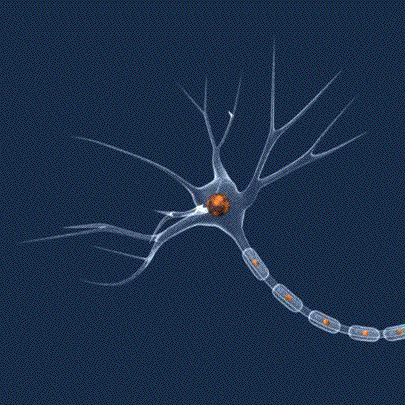NIH study indicates reverse impulses clear useless information, prime brain for learning

When the mind is at rest, the electrical signals by which brain cells communicate appear to travel in reverse, wiping out unimportant information in the process, but sensitizing the cells for future sensory learning, according to a study of rats conducted by researchers at the National Institutes of Health.
The finding has implications not only for studies seeking to help people learn more efficiently, but also for attempts to understand and treat post-traumatic stress disorder―in which the mind has difficulty moving beyond a disturbing experience.
During waking hours, brain cells, or neurons, communicate via high-speed electrical signals that travel the length of the cell. These communications are the foundation for learning. As learning progresses, these signals travel across groups of neurons with increasing rapidity, forming circuits that work together to recall a memory.
It was previously known that, during sleep, these impulses were reversed, arising from waves of electrical activity originating deep within the brain. In the current study, the researchers found that these reverse signals weakened circuits formed during waking hours, apparently so that unimportant information could be erased from the brain. But the reverse signals also appeared to prime the brain to relearn at least some of the forgotten information. If the animals encountered the same information upon awakening, the circuits re-formed much more rapidly than when they originally encountered the information.
“The brain doesn’t store all the information it encounters, so there must be a mechanism for discarding what isn’t important,” said senior author R. Douglas Fields, Ph.D., head of the Section on Nervous System Development and Plasticity at the Eunice Kennedy Shriver National Institute of Child Health and Human Development (NICHD), the NIH institute where the research was conducted. “These reverse brain signals appear to be the mechanism by which the brain clears itself of unimportant information.”
The study’s first author is Olena Bukalo, Ph.D., a postdoctoral fellow in Dr. Fields’s lab. NICHD colleagues Emilie Campanac, Ph.D., and Dax A. Hoffman, Ph.D., collaborated on the research.
Their findings appear in the Proceedings of the National Academy of Sciences.
The researchers studied the activity of rats’ brain cells from the hippocampus, a tube-like structure deep in the brain. The hippocampus relays information to and from many other regions of the brain. It plays an important role in memory, orientation, and navigation.
The classic understanding of brain cell activity is that electrical signals travel from dendrites—antenna-like projections at one end of the cell-- through the cell body. From the cell body, they then travel the length of the axon, a single long projection at the other end of the cell. This electrical signal stimulates the release of chemicals at the end of the axon, which bind to dendrites on adjacent cells, stimulating these recipient cells to fire electrical signals, and so on. When groups of cells repeatedly fire in this way, the electrical signals increase in intensity.
Dr. Bukalo and her team examined electrical signals that traveled in reverse―from the cell’s axon, to the cell body, and out its many dendrites. This reverse firing happens during sleep and at rest, appearing to reset the cell, the researchers found.
After first stimulating the cells with reverse electrical impulses, the researchers next stimulated the dendrites again with electrical impulses traveling in the forward direction. In response, the neurons generated a stronger signal, with the connections appearing to strengthen with repeated electrical stimulation.
This pattern appears to underlie the formation of new memories. A connection that is reset but never stimulated again may simply fade from use over time, Dr. Bukalo explained. But when a cell is stimulated again, it fires a stronger signal and may be more easily synchronized to the reinforced signals of other brain cells, all of which act in concert over time.
A graphic illustration of a reverse firing neuron is available at: http:// www.nichd.nih.gov/news/releases/Pages/031413-neurons-image.aspx.
###
About the Eunice Kennedy Shriver National Institute of Child Health and Human Development (NICHD): The NICHD sponsors research on development, before and after birth; maternal, child, and family health; reproductive biology and population issues; and medical rehabilitation. For more information, visit the Institute’s website at http://www.nichd.nih.gov/.
About the National Institutes of Health (NIH): NIH, the nation's medical research agency, includes 27 Institutes and Centers and is a component of the U.S. Department of Health and Human Services. NIH is the primary federal agency conducting and supporting basic, clinical, and translational medical research, and is investigating the causes, treatments, and cures for both common and rare diseases. For more information about NIH and its programs, visit http://www.nih.gov.

 BACK TO TOP
BACK TO TOP